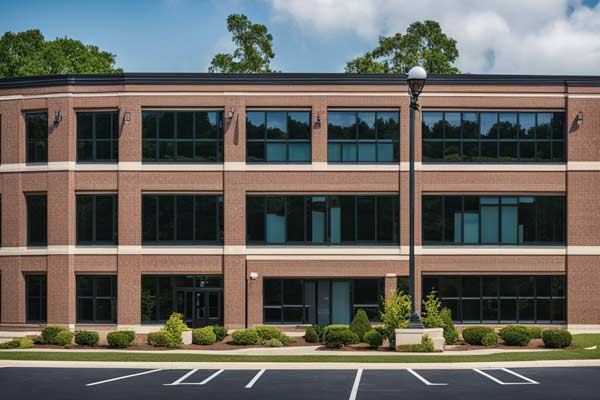Are Charter Schools Better Than Public Schools? A Comprehensive Analysis
Charter and public schools are two of the most popular options for parents looking to educate their children in the United States. While both types of schools have advantages and disadvantages, many wonder if one is better.
This article will explore the question: Are charter schools better than public schools?
Charter schools get public money but work independently, not following the regular public school rules. Usually, private groups or people run them, and they have more freedom to choose what and how they teach and who they hire.
On the other hand, public schools are run by the government and must follow state and federal regulations regarding curriculum, teacher certification, and standardized testing.
Proponents of charter schools argue that they provide more options for parents and students and can be more innovative in their approach to education. They also point to studies that show charter schools outperforming public schools in some areas.
Some people say charter schools may not have the same rules as public schools, which could mean not all students get an equal education. They also argue that charter schools taking resources away from public schools might decrease education quality.
Understanding Charter Schools
Charter schools are like regular public schools, but they have more freedom. They get public money, but they can make their own rules. People made them so parents can pick the best school for their kids.
Here are some essential things to know about charter schools:
Origins and Purpose
Charter schools were first established in Minnesota in 1991. The idea was to create schools with more autonomy and flexibility than traditional public schools.
Charter schools are still required to meet specific academic standards but are not subject to the same regulations and bureaucracy as traditional public schools.
Regulations and Autonomy
Charter schools are subject to fewer regulations than traditional public schools. A board of directors typically governs them, giving them more autonomy regarding decision-making. This can be both an advantage and a disadvantage.
🌟 Hey Students! 🚀 Ready for the ultimate experience? Join us on Studentsinside.com's Facebook, YouTube, WhatsApp, and LinkedIn. Click now for tips, fun, and success vibes! 🌈✨ #StudentLife #JoinUs
On the one hand, charter schools have more flexibility to try new approaches to education. On the other hand, this autonomy can also lead to inconsistency in quality across different charter schools.
Funding and Private Donations
Charter schools receive public funding, but they may also receive private donations. This can give them an advantage over traditional public schools regarding resources.
However, it is essential to note that not all charter schools receive private funding, and some may struggle to secure adequate funding.
Enrollment and Lottery System
Charter schools typically have an enrollment process that involves a lottery system. This means that students are selected at random to attend the school. This can be both an advantage and a disadvantage.
On the one hand, it ensures that all students have an equal chance of attending the school. On the other hand, it can lead to a lack of diversity in the student body, as some students may be more likely to be selected than others.
Understanding Public Schools
Public schools are educational institutions funded and managed by local, state, and federal governments. They are established to provide free education for all children within a specific geographic area.
Public schools are open to all students, regardless of background or ability, and must follow state and federal regulations.
Role of School Districts
Public schools are organized into school districts responsible for managing the schools within their jurisdiction.
School districts are typically governed by an elected school board responsible for setting policies, hiring staff, and managing the district’s budget.
Funding and Property Tax
State and local governments primarily fund public schools. In many states, schools are funded through state and local property taxes.
Each school’s funding is determined by a complex formula that considers factors such as the number of students, the district’s tax base, and the cost of living in the area.
Teachers and Collective Bargaining
Public school teachers are typically unionized and have the right to collective bargaining. Teachers negotiate salaries, benefits, and working conditions with the school district.
Collective bargaining agreements are usually negotiated on a district-by-district basis and can vary widely regarding the benefits and protections they offer teachers.
Comparing Curriculum and Programs
Flexibility in Charter Schools
Charter schools and public schools are different in how they plan lessons. Charter schools can make their lessons fit their students’ needs, while public schools have less freedom.
This means they can create specialized programs and courses not typically offered in public schools. For example, a charter school may focus on STEM education or offer courses in entrepreneurship.
Charter schools can also adjust their curriculum based on the needs of their students. If a student struggles in a particular subject, the school can provide additional resources and support to help that student succeed.
This level of flexibility allows charter schools to be more responsive to the needs of their students.
Standardized Curriculum in Public Schools
On the other hand, public schools must follow a standardized curriculum set by the state or school district.
This means all public schools in a particular state or district will teach the same subjects and use the same textbooks.
While this can provide a level of consistency across schools, it can also limit the ability of teachers to tailor their instruction to the needs of their students.
Special Programs and Offerings
Charter schools can also offer specialized programs and courses not typically in public schools. For example, many charter schools provide arts, theater, and music programs.
These programs can provide students with a well-rounded education and help them develop skills not typically emphasized in public schools.
On the other hand, public schools may need more resources or funding to offer these types of programs. This can limit the opportunities available to students and prevent them from exploring their interests and passions.
Assessing Quality of Education
When assessing the quality of education, there are several factors to consider. This section will examine the research and studies conducted on charter and public schools, the achievement gap, test scores, college prep, and student achievement.
Research and Studies
The Center for Research on Education Outcomes (CREDO) at Stanford University has extensively researched charter and public schools.
Their studies have found that while some charter schools perform better than traditional public schools, most charter schools perform about the same or worse than public schools.
Achievement Gap and Test Scores
Charter schools are said to help kids from lower-income families catch up with wealthier students. But we’re still determining if they do.
Some studies say charter schools are helping, while others say they might make the gap even bigger.
When it comes to test scores, the evidence is also mixed. Some studies have found that charter schools perform better than public schools on standardized tests, while others have found no significant difference.
College Prep and Student Achievement
When considering how good education is, check if schools help students prepare for college and if students do well academically. Charter schools differ—some focus on college prep and have high graduation rates, while others might not prioritize these things.
Looking at Demographics
Diversity in Charter Schools
Charter schools have been criticized for lacking diversity, with some accusing them of segregation. However, the data shows that charter schools are becoming more diverse.
According to a report by the National Alliance for Public Charter Schools, the percentage of Hispanic students in charter schools increased from 22% in 2006-07 to 30% in 2016-17. The percentage of black students in charter schools also increased from 26% to 27% during the same period.
Additionally, charter schools have a higher proportion of students from low-income backgrounds than traditional public schools.
In the 2016-17 academic year, 57% of students in charter schools qualified for free or reduced-price lunch, while the figure was 52% for traditional public schools.
Diversity in Public Schools
Public schools have traditionally been more diverse than charter schools. According to the National Center for Education Statistics, in 2018, public schools had a higher percentage of Hispanic students (26%) and black students (15%) compared to charter schools (15% and 10%, respectively).
However, public schools have also been criticized for lacking diversity, particularly regarding students with disabilities. In 2018, only 13% of public school students had a disability, compared to 16% of charter school students.
Analyzing Accountability and Transparency
Accountability in Charter Schools
Charter schools are held accountable for their performance and outcomes by the authorizing entity that grants them the charter. This authorizing entity can be a school district, a state education agency, or a university.
Charter schools are also subject to state and federal laws and regulations, including civil rights, health and safety, and financial management.
Charter schools must adhere to the same academic regulations as traditional public schools. Additionally, they are required to administer the same state tests. If a charter school falls short of its objectives or violates its agreement, it may face closure or non-renewal of its charter.
However, some critics argue that charter schools have less accountability than traditional public schools because they are subject to different levels of oversight and regulation.
They also claim that charter schools are more likely to engage in practices such as selective enrollment or expelling students to boost their academic performance.
Transparency in Public Schools
Public schools are subject to a high level of transparency because they are run by elected school boards and are funded by taxpayer dollars.
School boards must hold public meetings and provide detailed information about budgets, policies, and academic outcomes.
In addition, public schools are subject to state and federal laws and regulations that require them to report data on their academic performance, student demographics, and financial management.
This data is publicly available and can be used by parents, researchers, and policymakers to evaluate the effectiveness of public schools.
However, some critics argue that public schools must be more transparent because they often resist change and may need to adopt new policies or practices faster.
They also claim that public schools may be influenced by political agendas or special interest groups, which can affect their decision-making processes.
Weighing the Pros and Cons
Benefits and Drawbacks of Charter Schools
Charter schools are tuition-free schools that are independently managed and operated.
They are given more freedom than traditional public schools, which allows them to innovate and implement unique teaching methods.
However, this freedom also means that they are held to a different standard than public schools, which can lead to mismanagement and lack of accountability.
One of the benefits of charter schools is that they provide parents with a choice. Parents are provided an assigned school in many districts based on where the family lives.
Charter schools provide a choice better tailored to a child’s specific needs. Furthermore, these schools typically feature smaller classes, fostering more personalized student attention.
On the other hand, charter schools may need help with space and teacher turnover. Since they are not part of a public school district, they need access to the same resources and funding. This can lead to crowded classrooms and a need for qualified teachers.
Additionally, since charter schools are independently managed, there is a higher risk of mismanagement and financial instability.
Benefits and Drawbacks of Public Schools
The government funds public schools and must follow specific standards and regulations. They offer various programs and services, including special education and extracurricular activities.
However, public schools may struggle with overcrowded classrooms and a lack of innovation.
One of the benefits of public schools is that they are required to accept all students, regardless of their academic performance or background. This ensures that every child has access to a quality education.
Additionally, public schools have a lower risk of mismanagement and financial instability since the government oversees them.
However, public schools may need help with teacher turnover and crowded classrooms. Since they are required to accept all students, they may have larger class sizes and less individualized attention for students.
Additionally, since the government funds public schools, they may have a different level of innovation and flexibility than charter schools.








